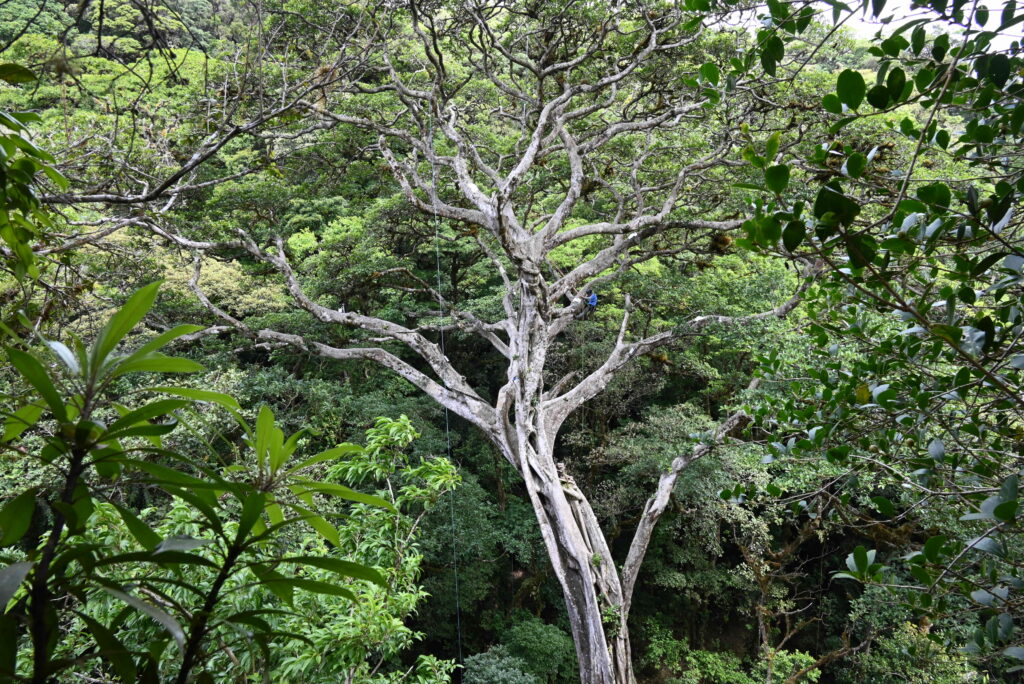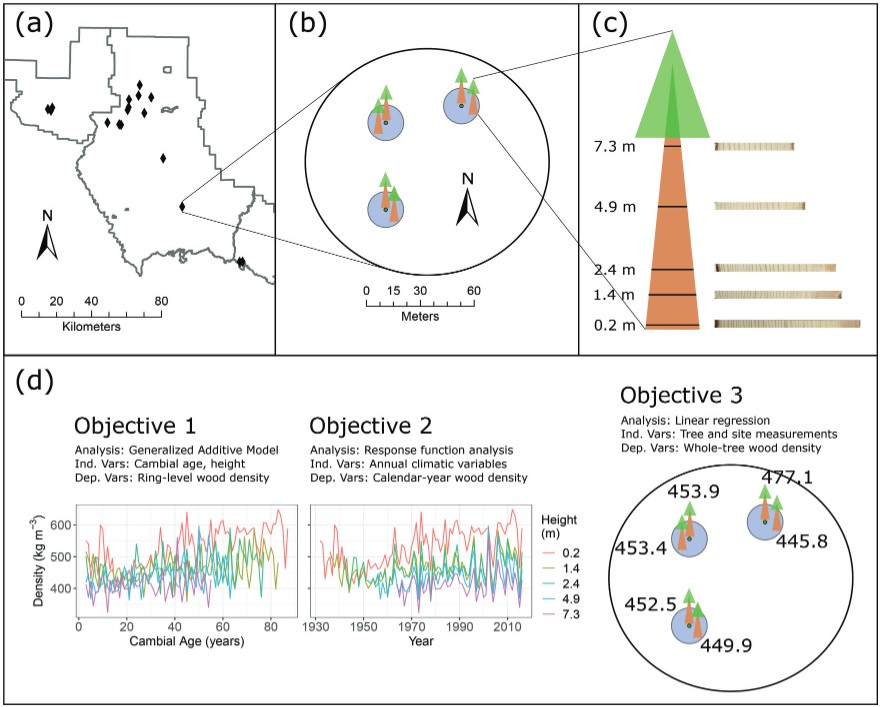Do epiphytes help or hinder host trees in Tropical Montane Cloud Forests?

Overview
Epiphyte populations will decline as climate change leads to drier conditions in Tropical Montane Cloud Forests. Our team investigated the effects that epiphyte loss may have on their host trees and on landscape-scale hydrological processes. We selected 20 large trees in a TMCF near Monteverde, Costa Rica, and conducted full-tree epiphyte removals on 10 of them, while leaving 10 control trees intact. We instrumented all trees with a variety of automated microclimate and tree health sensors, and conducted periodic leaf trait measurement campaigns to test for a treatment effect. Project setup (epiphyte removal and instrumentation) occurred April – August 2022, and the data collection period lasted approximately two years, until October 2024. Currently I am writing up the results in manuscripts.
Key findings
-Solar radiation and wind speed increased in stripped trees. However, rain and cloud penetration also increased in stripped trees, often making canopy interiors wetter
-There were no differences in key physiological leaf traits (turgor loss point, stomatal density, gas exchange) when comparing stripped to control trees
Publications
Wood density variation in northern Arizona ponderosa pine

Overview
Past forest management practices have left northern Arizona’s ponderosa pine dominated forests overstocked with small-diameter and low value timber that poses high fire risks. The byproducts from restoration treatments are often thought of as waste products, but this project sought to quantify wood quality in a way that could lead to higher-valued uses. We sampled ponderosa pine trees across the northern Arizona landscape using x-ray densitometry on tree cores, mechanical testing of small clear lumber samples, and acoustic methods
Key findings
-Mature wood of ponderosa pine trees can have relatively high values of key wood properties of strength, stiffness, and density. However, the juvenile core of most trees is quite large
-Drought years tend to increase wood density; thus projected future drought under climate change could lead to formation of higher-density wood
-Trees with higher density wood tend to be found on south-facing slopes
Publications
Vaughan D., D. Auty, T.E. Kolb, J. Dahlen, A.J. Sanchez Meador, K.H. Mackes. 2021. Wood density variation in naturally regenerating stands of Pinus ponderosa in northern Arizona, USA. Canadian Journal of Forest Research. 51:4.
Vaughan D., D. Auty, J. Dahlen, A.J. Sanchez Meador, K.H. Mackes. 2021. Modelling variation in wood stiffness of Pinus ponderosa using static bending and acoustic measurements. Forestry: An international Journal of Forest Research. 94:232 – 243.
Vaughan D., D. Auty, T.E. Kolb, A.J. Sanchez Meador, K.H. Mackes, J. Dahlen, W.K. Moser. 2019. Climate has a larger effect than stand basal area on wood density in Pinus ponderosa var. scopulorum in the Southwestern USA. Annals of Forest Science. 76:85.